”Through events, education, and advocacy at the local and national levels, Olmsted 200 ensures that the legacies of the Olmsteds live on across the country by renewing public and policy commitments to the preservation and maintenance of our historic parks and places. Olmsted Now is the Greater Boston effort, an inclusive coalition that connects communities and organizations commemorating Greater Boston’s bicentennial of Brookline-based Olmsted with the “fierce urgency of now.”
-
Frederick Law Olmsted National Historic Site
Article 1: Olmsteds: Landscapes and Legacies
Frederick Law Olmsted National Historic Site, in partnership with the National Center for Preservation Technology and Training (NCPTT), will host a three-day symposium as part of Olmsted 200, the national bicentennial commemoration of the birth of Frederick Law Olmsted, social reformer and founder of American landscape architecture. Read more
-
Frederick Law Olmsted National Historic Site
Article 2: Cambridge American Cemetery
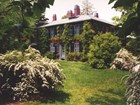
The Cambridge American Cemetery honors the service and sacrifice of more than 8,500 Americans who died in military operations based out of the United Kingdom (U.K.) during World War II. Read more
-
Frederick Law Olmsted National Historic Site
Article 3: Managing Historic Infrastructure in a Rapidly Changing Environment
Historic recreation routes at Acadia National Park were developed over time by different interests; the hiking trails network was created by the Rusticators, the carriage roads were developed by John D. Rockefeller Jr., and the motor road was also built by Rockefeller Jr. Read more
-
Frederick Law Olmsted National Historic Site
Article 4: Olmsted and Yosemite: Civil War, Abolition, and the National Park Idea
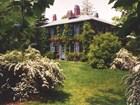
Rolf Diamant and Ethan Carr, Olmsted and Yosemite: Civil War, Abolition, and the National Park Idea (Amherst, MA: Library of American Landscape History, 2022) Both Central Park in New York and Yosemite Valley in California became public parks during the tumultuous years before and during the Civil War. Rolf Diamant and Ethan Carr demonstrate how anti-slavery activism, war, and the remaking of the federal government gave rise to the American public park. Read more
-
Frederick Law Olmsted National Historic Site
Article 5: Incorporating Contemporary Accessibility Features into a Historic Landscape
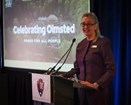
This presentation will provide an overview of the planning, designing, compliance, construction, and current use of an accessible trail that meets the laws and standards of the Americans with Disabilities Act (ADA) and the Architectural Barriers Act (ABA) while preserving the historic cultural landscape of the formal allée as designed by Frederick Olmsted Jr. for Lincoln Boyhood National Memorial in 1927 when the area was managed by the Indiana Lincoln Union. Read more
-
Frederick Law Olmsted National Historic Site
Article 6: Frederick Law Olmsted Jr’s Mountain Lake Sanctuary: The Creation and Legacy of a Didactic Landscape

The Mountain Lake Sanctuary and Bok Singing Tower near Lake Wales, Florida was the brainchild of its patron, Edward W. Bok, the Philadelphia based editor of the Ladies Home Journal and his wife, Mary Louise Curtis Bok. But it came to fruition through the leadership of Frederick Law Olmsted, Jr. and a design team that included architect Milton Medary, sculptor Lee Lawrie, and metalworker Samuel Yellin. Read more
-
Frederick Law Olmsted National Historic Site
Article 7: Frederick Law Olmsted, Jr. and the Improvement of Boulder, Colorado
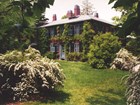
Imagine Boulder in the early 1900’s. There were not quite 10,000 people living in town, less than a tenth of Boulder’s population today. There were no paved streets and Boulder’s focus as a mining supply town was still in full force, with numerous smelters and mills located right along Boulder Creek. While Boulder had been selected as a site for the state university in 1861, it didn’t open until 1877, and in 1910 graduated just 163 students. Read more
-
Frederick Law Olmsted National Historic Site
Article 8: Creating a Campus: The 19th Century College Architecture of the Pioneer Valley
An article in the Mount Holyoke Alumnae Quarterly Winter 1988 edition states, “Like George Washington who seemed to have slept in every eighteenth century home in the Colonies, Frederick Law Olmsted, plus his son [sic] and associates, appears to have had a hand in the landscape design of just about every large estate, park, and campus during the last part of the nineteenth century and the early years of this century.” Read more
-
Frederick Law Olmsted National Historic Site
Article 9: Finding Olmsted in the Restoration of the U.S. Capitol Grounds
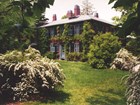
The Architect of the Capitol has embarked on a comprehensive project to restore the original arboretum of nearly 1000 trees at the United States Capitol as designed and constructed under the guidance of Frederick Law Olmsted, Sr. from 1874 to 1894. This paper presents the challenges, unexpected findings, and applications of a complex process that integrates archival research with current geospatial data for analyzing the integrity of the historic design and planning for futur Read more
-
Frederick Law Olmsted National Historic Site
Article 10: Balancing Adaptation and Legacy: How the Washington National Cathedral is Protecting its Olmsted Woods in the Era of Climate Change
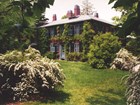
In this presentation, participants will learn about Olmsted’s role in the development of the National Cathedral grounds and recent efforts to ensure that this historic landscape can respond to the pressures of climate change in a way that guarantees longevity and honors the intent of Olmsted’s original design. Read more
-
Frederick Law Olmsted National Historic Site
Article 11: Adapting Washington’s Capitol Campus While Preserving the Olmsted Landscape Legacy
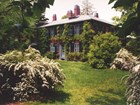
Our paper will share impacts of the robust community engagement program developed to gain public comment as Legislative Campus Modernization project adds nearly 150,000 square feet in the first major addition to the historic Capitol Campus since the Olmsted Brothers’ landscape was completed in 1931. Read more
-
Frederick Law Olmsted National Historic Site
Article 12: Olmsted’s 1883 Plan for Colgate University and its Impacts on the Campus
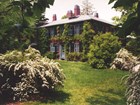
Olmsted came to Madison University (now Colgate) in mid-September 1883 at the behest of James B. Colgate, the leader of the University Board, and Ebenezer Dodge, University President. His primary charge was to advise the University on the siting of a Library/Museum and a Laboratory though earlier correspondence had also made it clear that the University desired a more comprehensive assessment of its expanding grounds. Read more
-
Frederick Law Olmsted National Historic Site
Article 13: “Once in a Lifetime” Opportunity to Restore Greenspace to Boston's Franklin Park
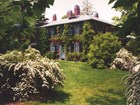
“Shattuck Hospital, now slated for demolition, currently sits on park land, a site that was taken from the community in 1949 and over the years has joined other sites that reduced Franklin Park’s free and public offerings to all by over 40%—roughly 200 acres of parkland that are not freely accessible to the public,” said Karen Mauney-Brodek, President of the Emerald Necklace Conservancy. Read more
-
Frederick Law Olmsted National Historic Site
Article 14: Bringing the Planting Fields Cultural Landscape Report to the Ground: Main Drive Renewal Project
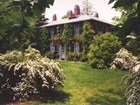
Planting Fields holds a prominent position in the Long Island community as a place for learning and enjoyment. From 1919 to the 1950s, the Olmsted Brothers and Coe collaboration shaped a rich Olmsted design palette and horticultural richness elevating and integrating the prior design efforts. The 400-acre former estate regional state park and arboretum carries on Coe’s legacy in the rich, diverse arboretum. Read more
-
Frederick Law Olmsted National Historic Site
Article 15: The Insane Asylum Landscapes of Olmsted and Vaux
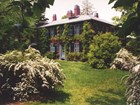
Olmsted and Vaux also designed and consulted on a number of insane asylum landscapes during the 1860s, 70s, and 80s. At the time, these landscapes were at the forefront of what would become the emerging medical specialization of psychiatry. Moral treatment was the prevailing method of care in these institutions, was a Quaker-inspired psychiatric practice that combined spiritual guidance, behavior modifications, and physical activity to administer patient healing. Read more
-
Frederick Law Olmsted National Historic Site
Article 16: The Olmsted Brothers 1918 Report on Washington D.C.’s Rock Creek Park: America’s First National Park General Management Plan
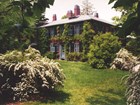
The Olmsted Brothers 1918 report on the development of Rock Creek Park in Washington, D.C., is the first comprehensive general management plan prepared for a U.S. national park. While Rock Creek Park’s status as a national park is often disregarded, the federal reservation’s 1890 authorization coincided with the first major expansion of the nascent national park system in which Yosemite, Sequoia, and General Grant also received official designation. Read more
-
Frederick Law Olmsted National Historic Site
Article 17: A Tale of Two Cities: Preserving the Olmsted Brothers Legacies in Seattle and Spokane, Washington
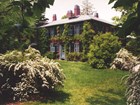
The Olmsted Brothers, Landscape Architects took their famous father’s principles of landscape design into the 20th century, designing parks and boulevard plans for numerous young cities in the topographically gifted Northwest. One hundred years later, two of these cities, Seattle and Spokane, are reassessing the Olmsted plans that influenced everything from land acquisition to park design and funding for Parks departments. Read more

